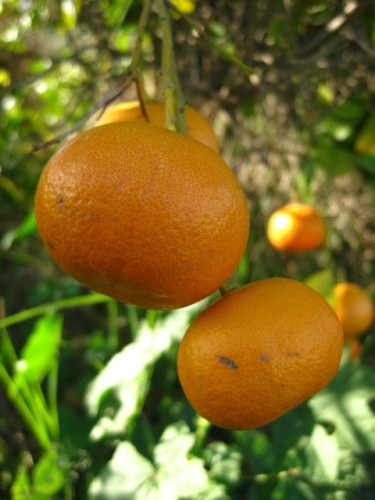You will need
- the Scion (a Bud with the petiole from cultivated plants), rootstock (seedling Mandarin or other citrus), okulirovannyh knife, elastic band, outdoor options, plastic sheeting for a mini greenhouse
Instruction
1
Giving the vaccination is best in April-early may, when the bark of the plant, a period of active SAP movement. At this time the bark is easily separated from the wood, and the Scion is easier to survive in the new environment. You can also instill the tangerines in August, when the plant is full of energy after the summer.
2
Inoculation of oranges is best done on seedlings of other citrus fruits: lemon, orange or orange. But the success of this procedure by grafting cultivated plants on a seedling of a Mandarin. It is important that vaccination was carried out neatly, quickly, in terms of cleanliness. Then the plant can easily be adapted to this effect.
3
Before starting vaccination, you need to prepare all the necessary materials: a Scion with well-ripened wood, the Scion, taken from the cultural fertile plants, garden var, elastic band, okulirovannyh knife. The most common and convenient method is grafting budding, in other words "eye", in which the rootstock sprouted transplanted a kidney from leaf cuttings from cultivated plants.
4
Vaccination should be carried out quickly and carefully so as not to damage the wood of a sapling. At a height of about 7 cm from the soil the trunks of the rootstock, wipe the dust and dirt, then a very sharp, clean knife cut the crust in the form of the letter "T" so not to touch the wood. The size of the cut is about 1 cm horizontally and about 2.5 cm in height. The tip of a knife the bark is carefully folded to the sides and formed in the bosom inserted the "eye", holding it for the preservation of the petiole.
5
The inserted section from the kidney again cover the corners of the bark of the rootstock, good smoothing and pressing for closer contact. Then the site of inoculation smeared garden pitch for the speedy healing of the wound and wrap with an elastic band, leaving only the protruding stem with the leaf. Inoculated plants are then placed in a temporary mini-greenhouse, which can be made from a large plastic bag or plastic film. This mini-greenhouse will create comfortable conditions for trees and contribute to better healing of the graft.
6
To judge the success of vaccination is necessary as the petiole – if something doesn't go right, it will turn black and dry to the panel. But usually the transplanted kidney successfully take root in 2-3 weeks. This is indicated by yellowing and easily removable petiole. For better acclimatization of grafted plants to indoor conditions teplichku periodically need to access, gradually increase the ventilation time. After the final sewing and sprouting buds, dense winding of the weaken, and then removed.
7
When the grafted kidney starts growing young shoot (about three weeks after grafting), the stem of the rootstock is cut obliquely at a height of about 5 mm. above the base of the escape and treat the cut garden pitch. To the young shoot growing vertically and formed a proper crown, it is tied to a stick inserted in the pot.
